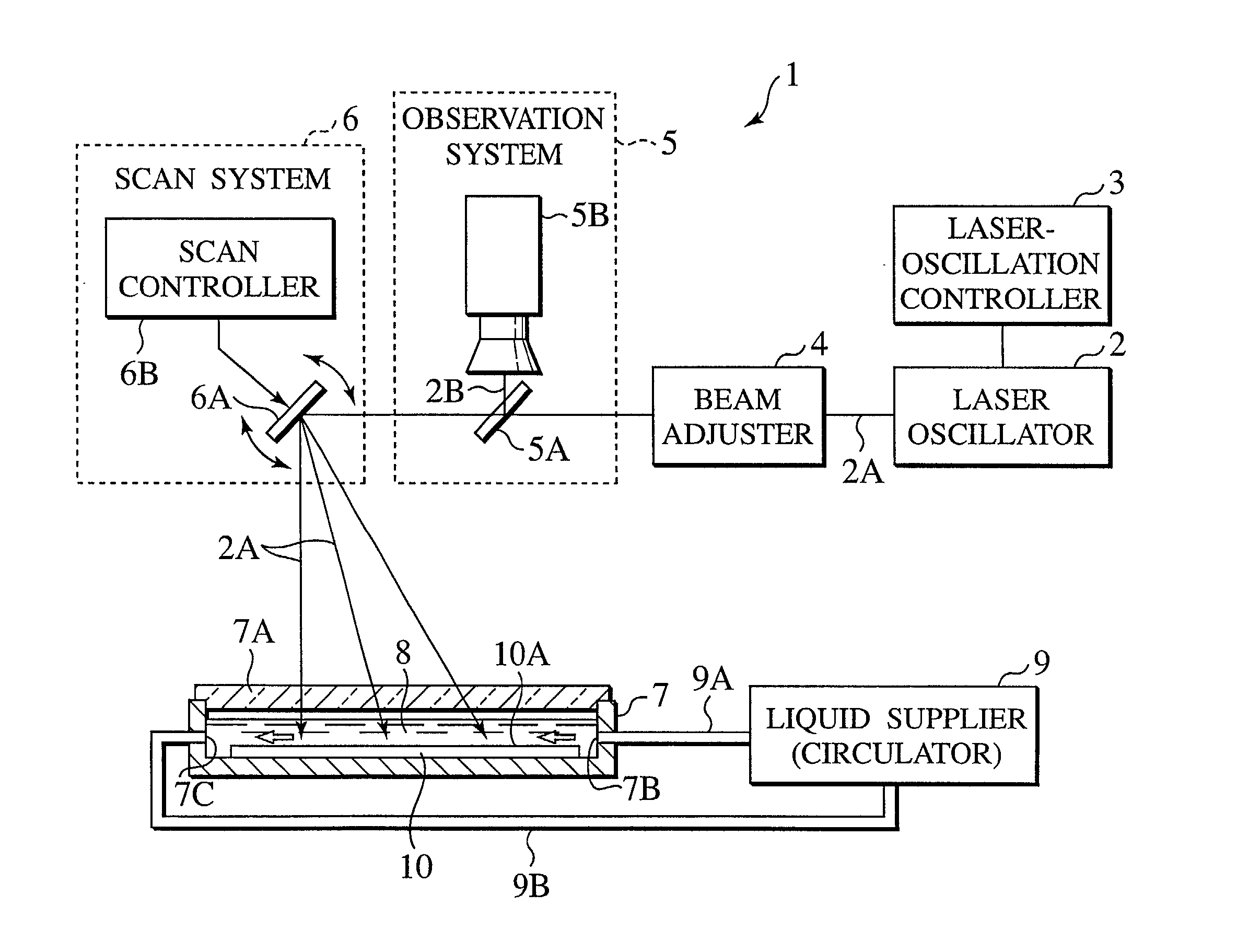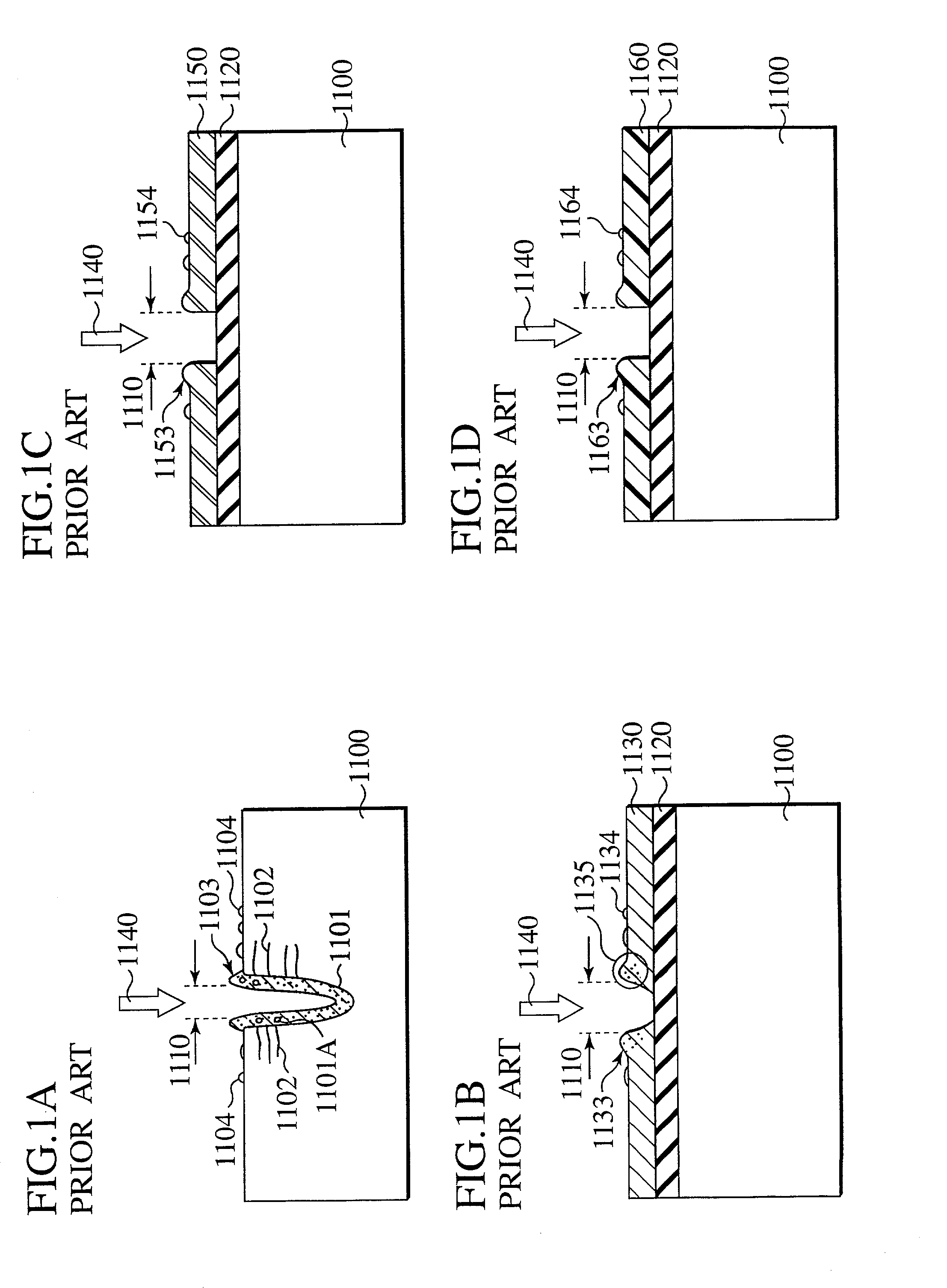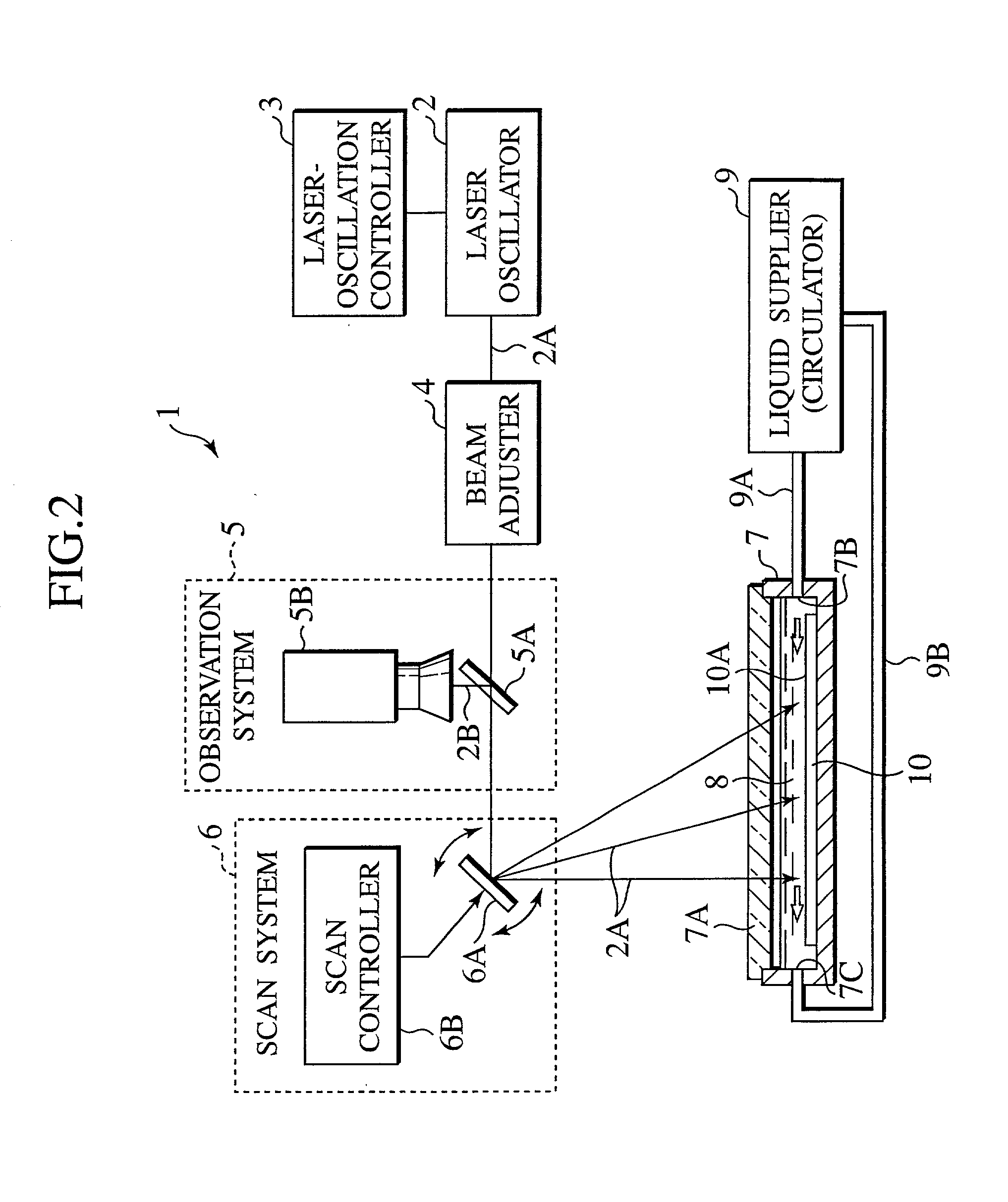Apparatus and method for laser beam machining, and method for manufacturing semiconductor devices using laser beam machining
a laser beam machining and laser beam technology, applied in metal working apparatus, manufacturing tools, welding/soldering/cutting articles, etc., can solve the problems of poor exposure, drop in manufacturing yield, dust adhesion and accumulation on the processed area,
- Summary
- Abstract
- Description
- Claims
- Application Information
AI Technical Summary
Problems solved by technology
Method used
Image
Examples
first embodiment
[0049] (First Embodiment)
[0050] FIG. 2 illustrates a laser beam machining apparatus 1 according to the first embodiment of the invention. The laser beam machining apparatus 1 includes a laser oscillator 2, a holder 8 for holding an object 10 that is to be processed, a scanning system 6 for scanning the laser beam 2A emitted from the laser oscillator 2 on a target surface 10A of the object 10, and a liquid supplier 9 for supplying a liquid into the holder 6 (more particularly, to the target surface 10A). The holder 6 has an inlet port 7B and an outlet port 7C positioned so as to align with the target surface 10A of the object 10. In the following explanation, a silicon single crystal wafer 10 is used as an example of the object 10.
[0051] The laser beam machining apparatus 1 also includes a laser-oscillation controller 3, a beam adjuster 4, and an observation system 5 for observing the irradiation spot on the wafer 10.
[0052] The laser oscillator 2 is, for example, Q-switch Nd YAG lase...
second embodiment
[0067] (Second Embodiment)
[0068] FIG. 3 illustrates a laser beam machining apparatus 100 according to the second embodiment of the invention. The laser beam machining apparatus 100 comprises a laser oscillator 2, a holder 7 that holds the object to be processed (for example, a wafer) 10, a scanning system 6 for scanning a laser beam 2A emitted from the laser oscillator 2 on a target surface 10A of a wafer 10, a liquid supplier 9 for supplying a liquid 8 to the holder 7, and a ultrasonic application mechanism for providing a ultrasonic vibration to the target surface 10A of the wafer 10.
[0069] In the example of FIG. 3, the ultrasonic application mechanism is comprised of a piezoelectric element 120 attached to the rear face of the holder 7, and a driving controller 121 for controlling the motion of the piezoelectric element 120. Ultrasonic vibration propagates from the piezoelectric element 120 to the wafer 10 via the holder 7, and consequently, the target surface 10A of the wafer 10...
third embodiment
[0076] (Third Embodiment)
[0077] Various applications of the laser beam machining approach introduced in the first and second embodiments to a manufacturing process of semiconductor devices will now be described.
[0078] (1) Laser Beam Machining of a Semiconductor Substrate
[0079] FIG. 4 illustrates an example of forming a trench 11T in a semiconductor substrate (e.g., a silicon single crystal wafer) 11 using the laser beam machining approach of the first or second embodiment.
[0080] Laser beam machining is desired as an efficient dicing technique for cutting a wafer into chips, in place of a blade or a wire saw. As layers become thinner and thinner and the pattern on a semiconductor chip becomes finer and finer, a so-called first dicing technique is efficiently used to cut a semiconductor wafer into chips. With the first dicing technique, a groove that reaches halfway through the wafer is formed from the patterned surface of the wafer, and then, the wafer is polished from the bottom fac...
PUM
| Property | Measurement | Unit |
|---|---|---|
| Flow rate | aaaaa | aaaaa |
Abstract
Description
Claims
Application Information
 Login to View More
Login to View More - R&D
- Intellectual Property
- Life Sciences
- Materials
- Tech Scout
- Unparalleled Data Quality
- Higher Quality Content
- 60% Fewer Hallucinations
Browse by: Latest US Patents, China's latest patents, Technical Efficacy Thesaurus, Application Domain, Technology Topic, Popular Technical Reports.
© 2025 PatSnap. All rights reserved.Legal|Privacy policy|Modern Slavery Act Transparency Statement|Sitemap|About US| Contact US: help@patsnap.com



